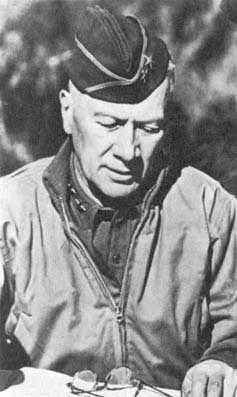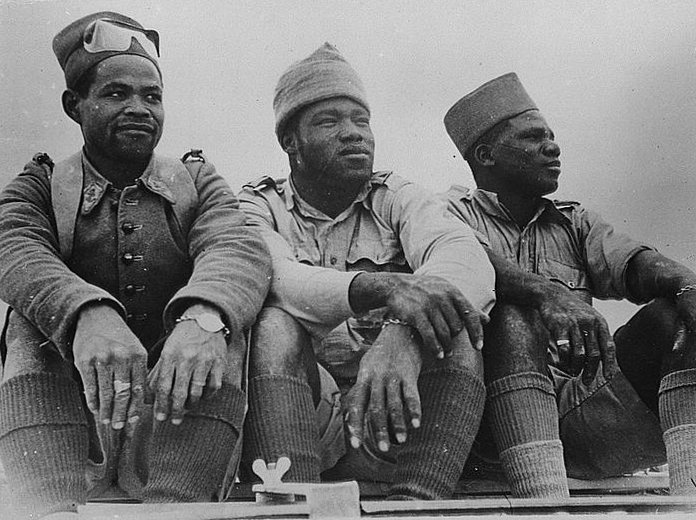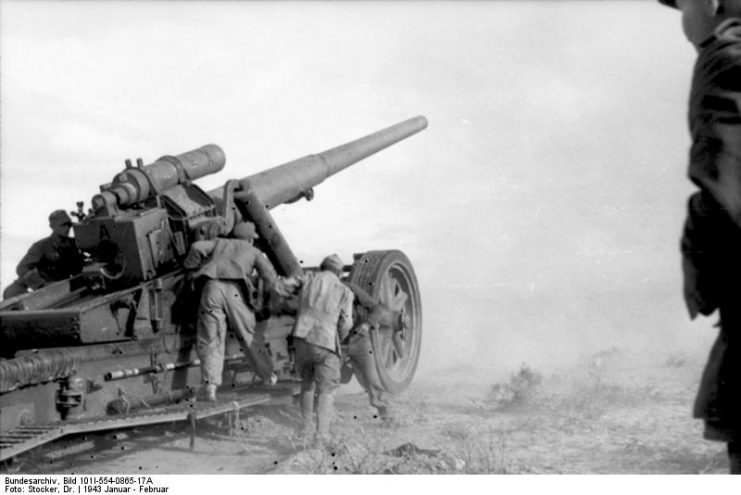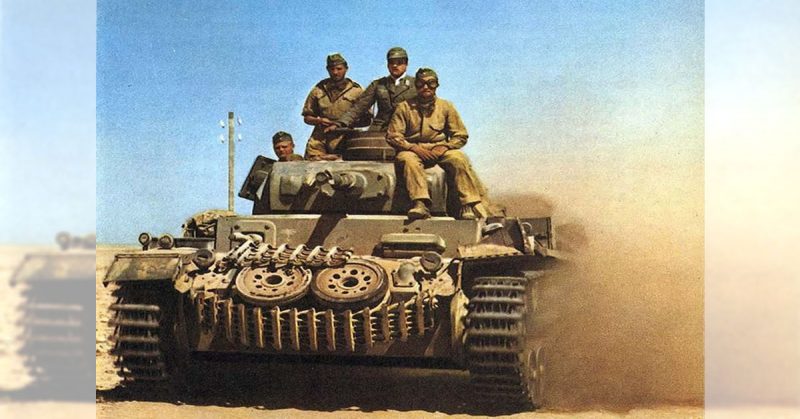On January 30, 1943, German forces attacked the French holding Faïd Pass in Tunisia. The battle highlighted the weakness Allied troops in North Africa were prone to. It also showed the decisive action the Germans were capable of, even as the war was turning against them.
Faïd Pass
Fighting in Tunisia was all about control of supply lines. A limited number of passes allowed communication and supplies through the imposing mountains which broke up the region’s flat plains.
Faïd Pass had fallen to Allied forces on December 3, 1942, less than a month after the Americans invaded Axis-occupied Tunisia. French troops, supported by American paratroopers, had taken the pass from the Axis powers.
It was a strategically important position. It lay almost directly between Thélepte, the furthest forward airbase held by the Allies, and their supply base at Tébessa. Holding onto Faïd Pass was therefore vital to keeping Thélepte viable and Allied planes dominant in the skies over eastern Tunisia.
Major General Lloyd Fredendall, the commander of the American II Corps, decided not to reinforce the French troops, who now held the pass without American support. He believed that by attacking Maknassy he could draw off German forces and so prevent an attack at Faïd.
Perhaps it was an inherently flawed plan or was improvised too late to work. Either way, its weakness was about to be exposed.

Rommel’s Veterans Arrive
As the Americans advanced through Tunisia, Axis forces were pulling back from their positions further east. Rommel’s Afrika Corps had been engaged in a long fight against the British. Now caught between their old opponents and the American Operation Torch landings, they were retreating into Tunisia. It was where the Axis powers made their last stand in North Africa.
The result was the arrival of Rommel’s veteran troops near Faïd Pass. The most experienced forces in the region were about to hit the exposed French.
Attacking the Pass
Like many actions in the desert, it was dominated by tanks, with German Panzers bringing power to the Axis strike.
The attack was led by the 21st Panzer Division, the first veteran unit to reach Tunisia. It was supported by a mix of Italian and German forces drawn from the Fifth Army.
It was a carefully staged assault. In the east, a two-pronged attack fell upon the French forces. Meanwhile, another strike from the southwest caught them in the rear.
Holding Out for Support
The French fought fiercely. It was their territory, only just liberated from occupation by the Germans and their Vichy collaborators. They held onto the pass, despite enemies advancing from all sides.
They were outgunned and outnumbered, facing men with more experience of war than them. They needed help. As the Axis forces tightened the noose, the French called the Americans for support.
Under fire and under pressure, they clung to the pass and waited for the armored cavalry to arrive.

Strange Orders
Brigadier General Raymond McQuillin was in charge of Combat Command A. Based in Sbeitla, 30 miles west of Faïd, his were the closest American troops to the pass.
On the morning of January 30, McQuillin received an indecisive set of orders from Fredendall. McQuillin was to counterattack at Faïd Pass, to restore French control there. He was also ordered not to weaken the defense of Sbeitla or reduce the covering force he had northeast of there. In short, his troops were to attack while remaining where they were.
Odd as the order might seem, it was not all that unusual for Fredendall. McQuillin overcame any concerns he had and went on the offensive.
Within half an hour of receiving his orders, McQuillin had sent a company of tanks to scout out the situation.
McQuillin’s Attack
McQuillin then sent a larger force after the tank company. More tanks, artillery, and armored infantry drove toward the combat zone.
From the skies above the desert, Axis planes fell upon the American column. The soldiers from Combat Command A took such heavy losses that McQuillin decided to call off the counterattack until the next morning.
Throughout the night, the Americans prepared the attack, while the Germans and Italians assembled to hold them off. Meanwhile, the French clung on in their increasingly desperate position.
At 7 AM on January 31, McQuillin launched his counterattack again. A few small German tanks came out of the pass to meet them, then pulled back, apparently retreating in the face of the American might. A company of American tanks followed, pressing against the Germans.
It was a trap. In the foothills of Faïd Pass, the Germans and Italians had spent the night digging in. Tanks were concealed by gullies and rises in the ground. Heavy machine guns, mortars, and antitank guns were positioned in hastily assembled emplacements.
The American tanks were caught in a devastating hail of fire. Nine were destroyed in a few minutes. The survivors were forced to retreat.
Meanwhile, further south, another attack by McQuillin’s men was broken and driven back in disorder.

Stack’s Advance
One hope remained. Colonel Robert Stack’s Combat Command C was also in the area. At the urging of the French, he was diverted from the advance on Maknassy.
Like McQuillin, Stack was ordered to do several things at once in response to the Axis attack. His orders included advancing on Sidi Bou Zid, a village near the Faïd Pass. On the night of January 30, his forces were within a few miles of McQuillin’s although, unfortunately, they were not in direct contact.
On the morning of the 31st, Stack set out for Sidi Bou Zid, but in the afternoon he received orders to change direction again and head back toward Maknassy. A desperate French general urged Stack to check his orders. They remained the same.
Fredendall was under the mistaken impression McQuillin’s troops were in control at the pass. So he turned Stack back to the original plan.
The Fog of War
Events at Faïd Pass highlighted one of the biggest problems facing the Allies in Tunisia – lack of coordination. Due to Fredendall, the French never received the support they needed. Despite strong resistance, they were overwhelmed. The French leadership protested to the Americans. Fredendall was removed from his post, but it was little comfort to the men lost at the pass.
Sources:
Orr Kelly (2002), Meeting the Fox: The Allied Invasion of Africa, from Operation Torch to Kasserine Pass to Victory in Tunisia
